Brooke Benington x Catinca Tabacaru Gallery
Nona Inescu
Daisyworld
Brooke Benington and Catinca Tabacaru Gallery present Daisyworld, a solo exhibition by Nona Inescu that explores the intricate interplay of species and materials in a speculative, post-human environment.

Nona Inescu
Common Daisy (Bellis perennis) X, 2024
Brass
18 x 10 cm
7 1/8 x 4 in.
Unique

Daisyworld draws inspiration from the mathematical model developed by James Lovelock and Andrew Watson in 1984, which simulates a hypothetical world orbiting a star with fluctuating radiant energy. The model, designed to support the Gaia hypothesis, features black and white daisies that regulate the planet’s temperature through their respective abilities to absorb and reflect light. Inescu reimagines this concept to examine the hybrid relationships between humans, nature, and non-human species.
In this new series, Inescu’s practice evolves through the juxtaposition of vegetal matter with materials such as brass. The exhibition's central installation consists of a group of new sculptures of cast mutated daisies invading a large part of the gallery floor space. The daisies are modelled after malformed real-life specimens of Bellis perennis (Common daisy) found in radioactive areas such as Fukushima (Japan) and Chernobyl (Ukraine). Flower deformity could have been induced by radiation, as well as chemicals, diseases, a hormone imbalance, or random mutations to inherited genes.


The encounter with these works is both seductive and thought-provoking, revealing new ecosystems where the boundaries between the human, vegetal, and built environments blur.

Nona Inescu
Rosa canina, 2021/2024
Archival pigment print
100 x 70 cm
39 3/8 x 27 1/2 in.
Edition 4 of 5
The vegetal motif recurs throughout the exhibition, symbolising the delicate balance and self-regulation of ecosystems. Presented for the first time in the exhibition The Venus Trap in 2021, the works Brugmansia, Aristolochia, and Rosa canina (all 2021) are part of a body of photographs where a hand, coming into contact with different plant essences, gives birth to a new individual, a hybrid. The apparent simplicity of the image does not prevent it from being confusing: is it the hand that slips into the flower or the flower that swallows the hand?
This improbable union creates a third term: the appearance of an animal silhouette, similar to the head of a bird with a long beak. Originally from South America, brugmansia is a plant which no longer exists in the wild, but which remains cultivated for its psychotropic properties, used by Andean shamans to enter a trance. In Nona Inescu’s work, the hand seems simultaneously to be captive and to wear the flower like a mask – a hummingbird mask for example. Through this simple gesture, the artist establishes an implicit link between evolutionary strategy, metamorphosis, and magic, blurring the distinction between cultural and natural data.
The encounter with these works is both seductive and thought-provoking, revealing new ecosystems where the boundaries between the human, vegetal, and built environments blur. Inescu's work encourages us to imagine new interactions and collaborations, producing a speculative landscape that contemplates the future of our interconnected world.
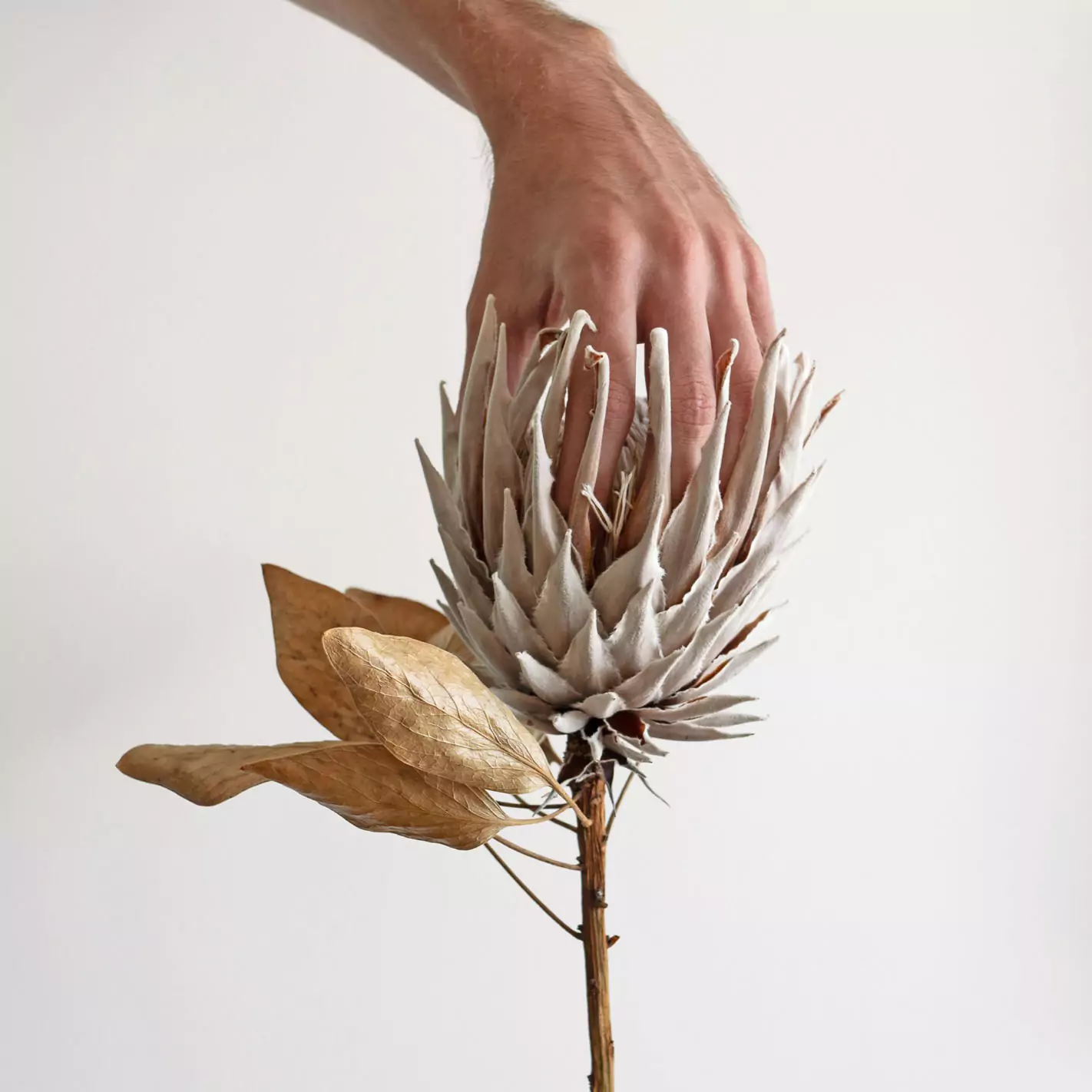
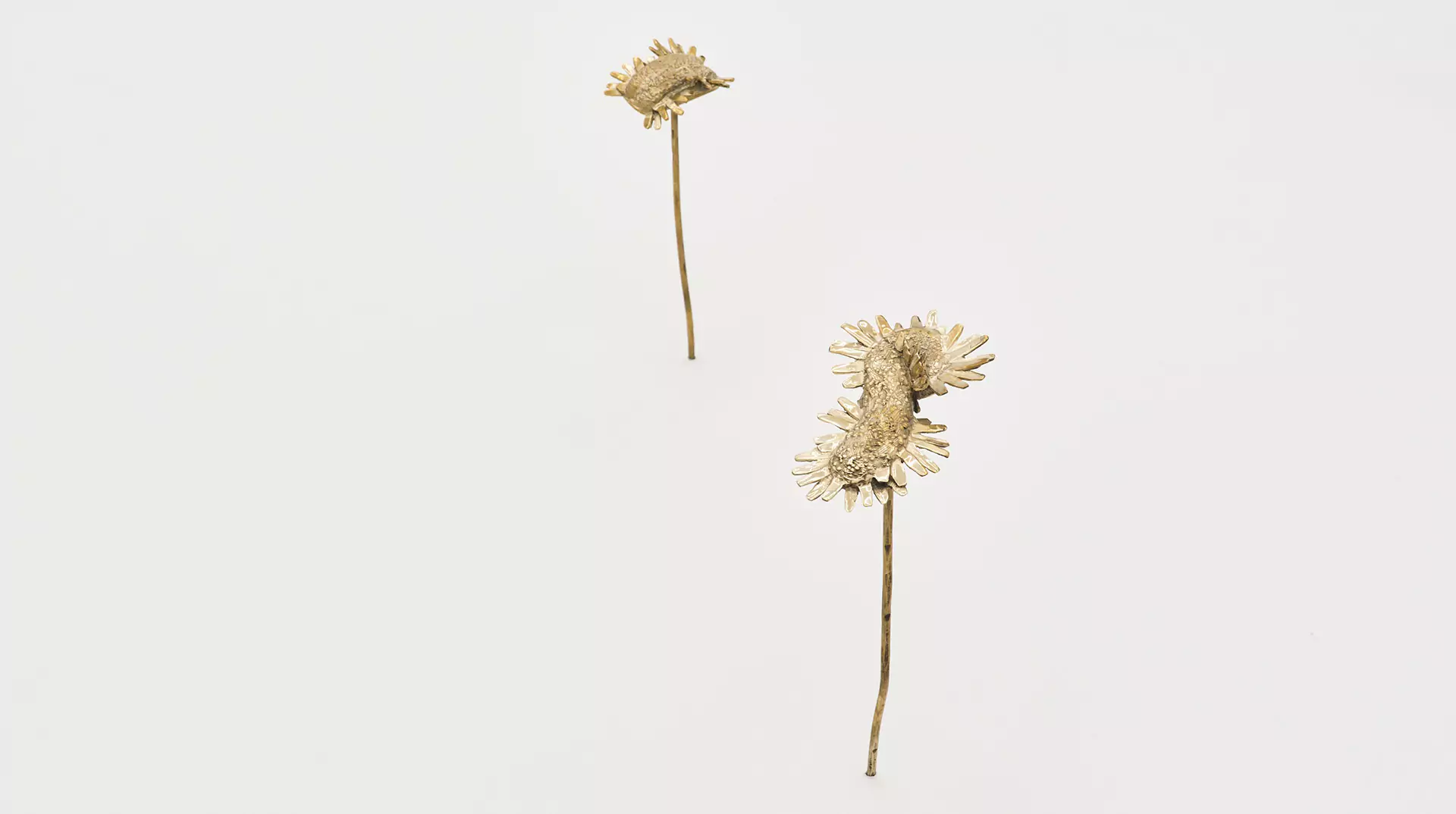

Nona Inescu
Common Daisy (Bellis perennis) I, 2024
Brass
15 x 12 cm
5 7/8 x 4 3/4 in.
Unique
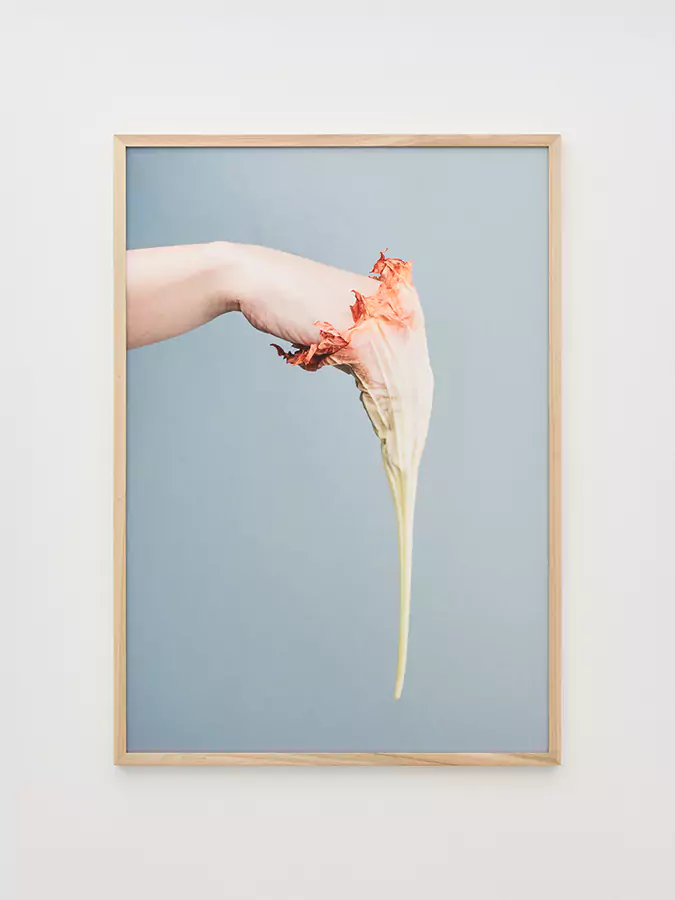
Nona Inescu
Brugmansia, 2021/2024
Archival pigment print
100 x 70 cm
39 3/8 x 27 1/2 in.
Edition 3 of 5

Nona Inescu
Common Daisy (Bellis perennis) XI, 2024
Brass
8 x 7 cm
3 1/8 x 2 3/4 in.
Unique
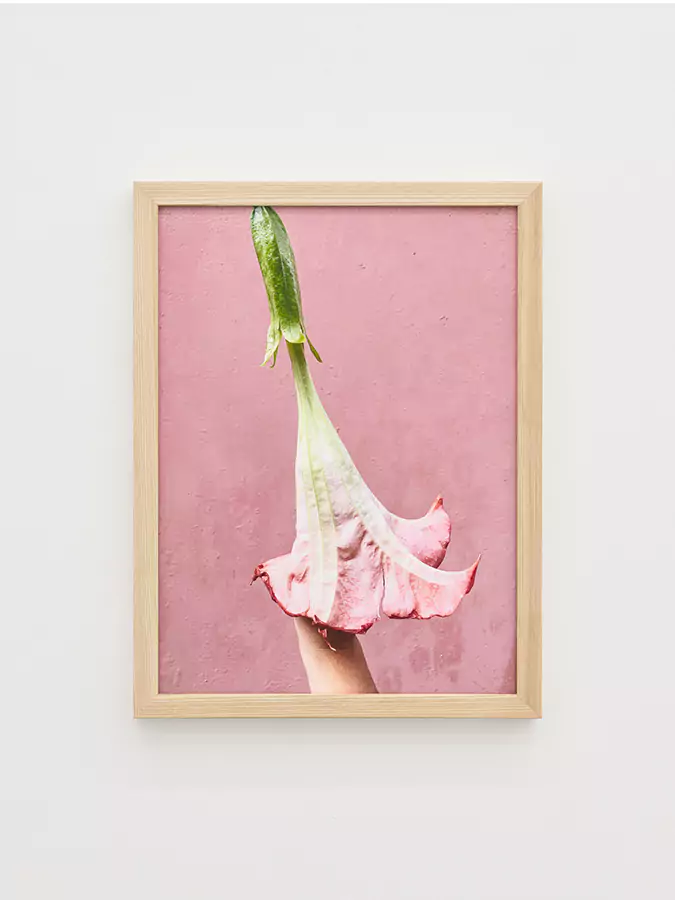
Nona Inescu
Angel’s Trumpet, 2024
Archival pigment print
40 x 30 cm
15 3/4 x 11 3/4 in.
Edition 1 of 3

Nona Inescu
Common Daisy (Bellis perennis) VII, 2024
Brass
15 x 8 cm
5 7/8 x 3 1/8 in.
Unique
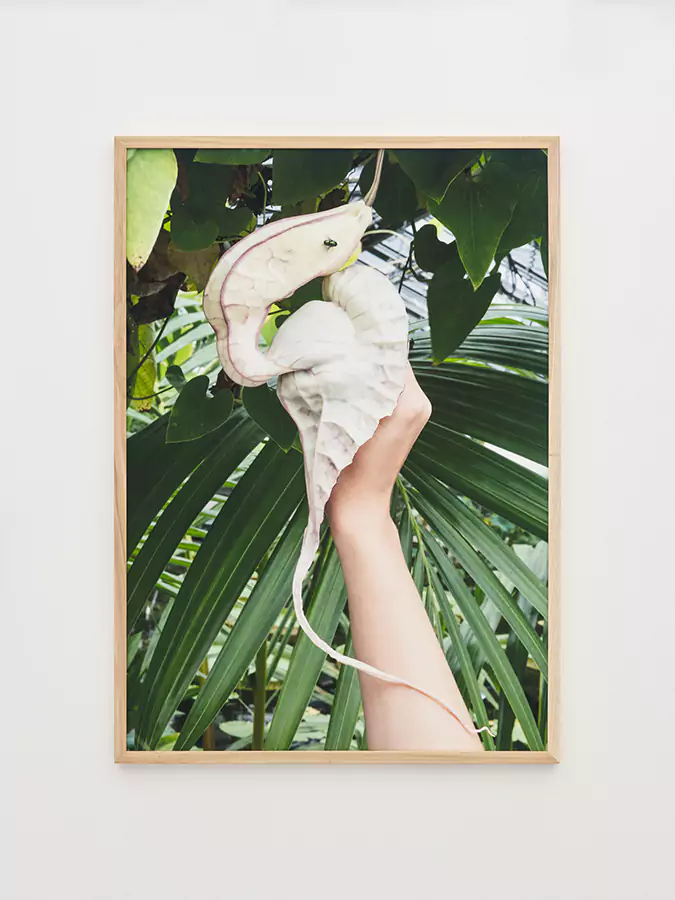
Nona Inescu
Aristolochia, 2021/2024
Archival pigment print
100 x 70 cm
39 3/8 x 27 1/2 in.
Edition 2 of 5

Nona Inescu
Common Daisy (Bellis perennis) X, 2024
Brass
18 x 10 cm
7 1/8 x 4 in.
Unique

Nona Inescu
Rosa canina, 2021/2024
Archival pigment print
100 x 70 cm
39 3/8 x 27 1/2 in.
Edition 4 of 5
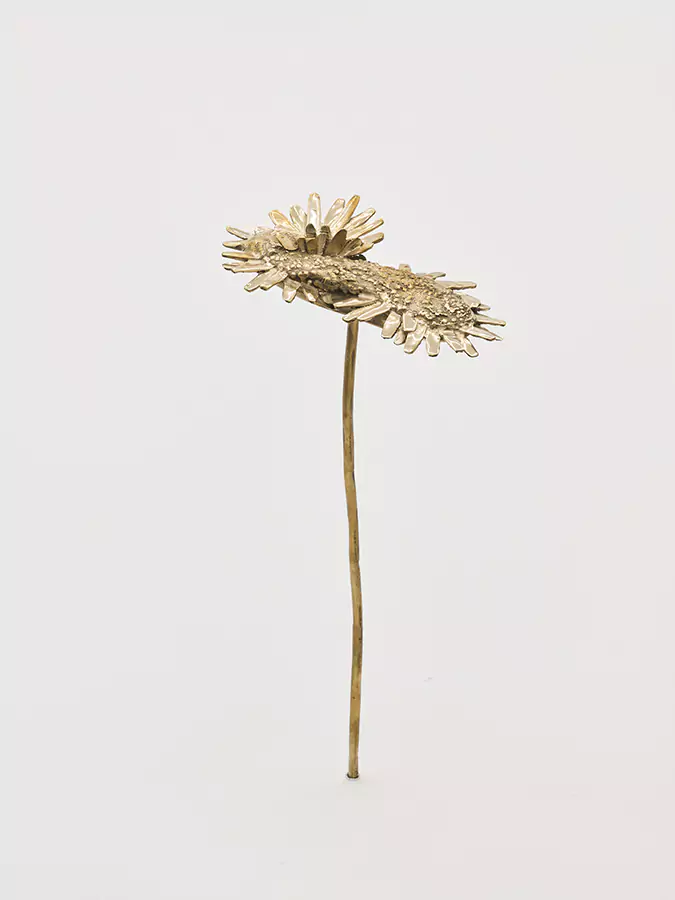
Nona Inescu
Common Daisy (Bellis perennis) V, 2024
Brass
15 x 8 cm
5 7/8 x 3 1/8 in.
Unique
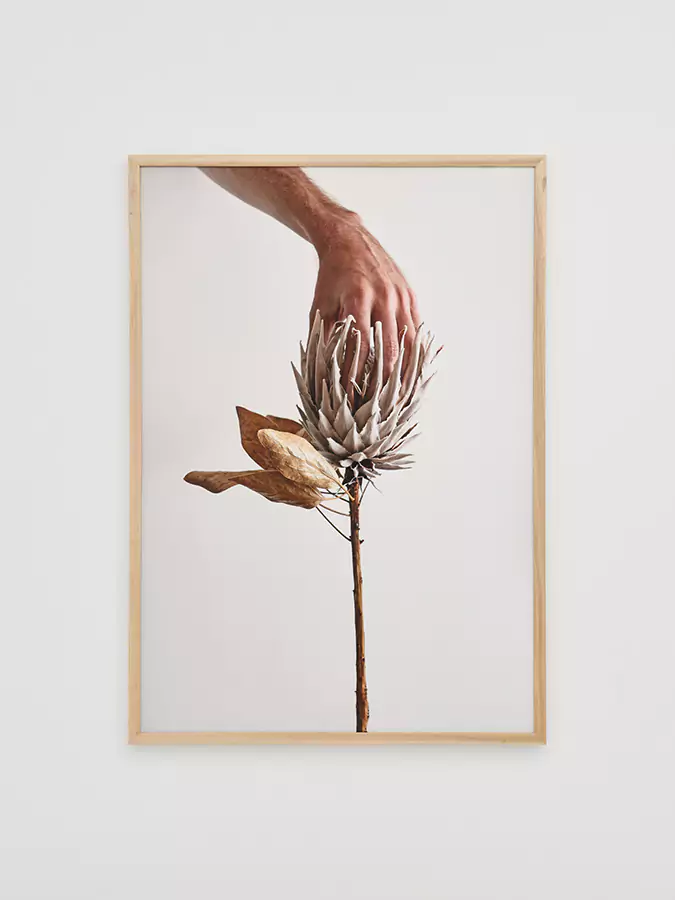
Nona Inescu
Protea, 2023/2024
Archival pigment print
100 x 70 cm
39 3/8 x 27 1/2 in.
Edition 1 of 5

Nona Inescu
Common Daisy (Bellis perennis) IX, 2024
Brass
11 x 8 cm
4 3/8 x 3 1/8 in.
Unique
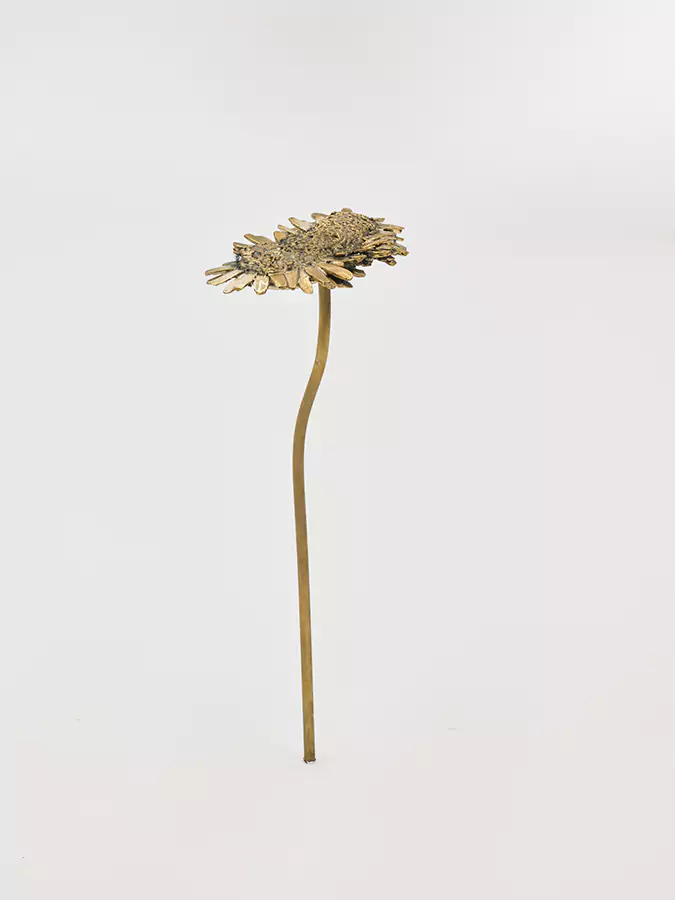
Nona Inescu
Common Daisy (Bellis perennis) VIII, 2024
Brass
17 x 7 cm
6 3/4 x 2 3/4 in.
Unique
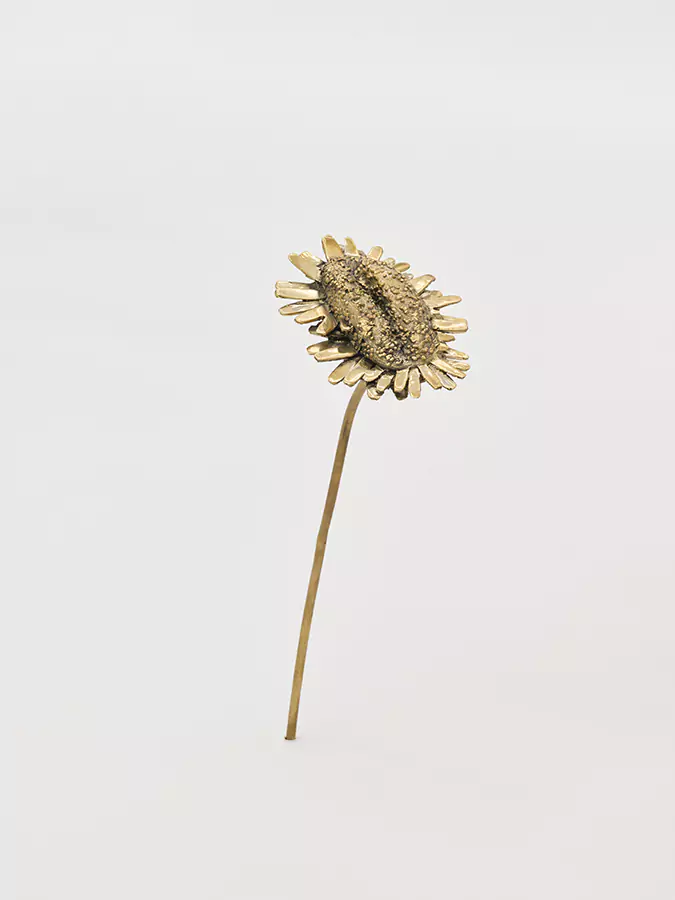
Nona Inescu
Common Daisy (Bellis perennis) III, 2024
Brass
11 x 8 cm
4 3/8 x 3 1/8 in.
Unique
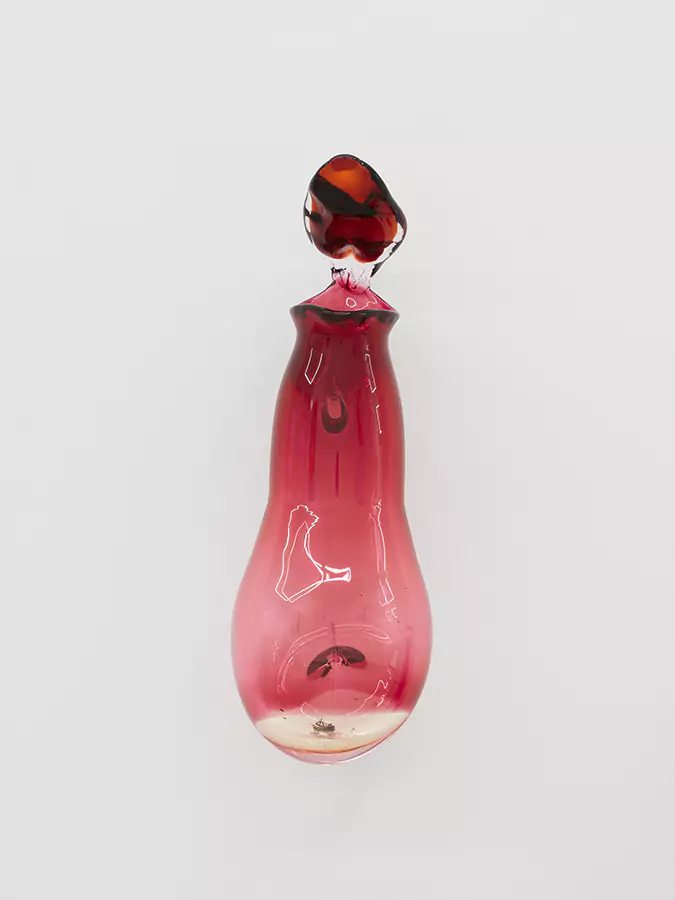
Nona Inescu
Nepenthes II, 2024
Glass and wasp
36 x 11 x 12 cm
14 1/8 x 4 3/8 x 4 3/4 in.
Unique

Nona Inescu
Common Daisy (Bellis perennis) II, 2024
Brass
12 x 10 cm
4 3/4 x 4 in.
Unique

Nona Inescu
Common Daisy (Bellis perennis) IV, 2024
Brass
18 x 10 cm
7 1/8 x 4 in.
Unique

Nona Inescu
Common Daisy (Bellis perennis) VI, 2024
Brass
8 x 7 cm
3 1/8 x 2 3/4 in.
Unique

Nona Inescu
Nepenthes I, 2024
Glass
39 x 12 x 11 cm
15 3/8 x 4 3/4 x 4 3/8 in.
Unique
Nona Inescu (b. 1991) lives and works between Athens, Greece, and Bucharest, Romania. She completed her studies in 2016 at the National University of Arts in Bucharest (Photography and Video Department) after studying at the Chelsea College of Art in London (2009-2010) and the Royal Academy of Fine Arts in Antwerp (2010-2011). Her interdisciplinary artistic practice includes photography, installation, sculptures, and video works.
Based on a theoretical and literary perspective, the works focus on the relationship between the human body and the environment and the redefinition of this subject in a post-human key. The mediating properties of the body are rendered in several ways, projecting a translation of the world driven by affect, signalling its position as an interface between self and reality. Concepts of geological time and our intense interrelation with our surroundings compose an aesthetic of a primal contemporary togetherness in an organic and biological techno-sphere.
Recent exhibitions have taken place at: Rodeo Gallery (London), Goethe Institut (Bucharest), Le CAP Saint-Fons (Lyon); Kunstraum Kreuzberg (Berlin); MAMAC (Nice); Radius (Delft); SpazioA (Pistoia); Centre Clark (Montreal); Art Encounters Biennale (Timișoara); Steirischer Herbst (Graz); Peles Empire (Berlin); basis (Frankfurt), Tallinn Art Hall (Estonia), Museo della Montagna (Torino), among others.

 Collaborations
Collaborations Media
Media Events
Events